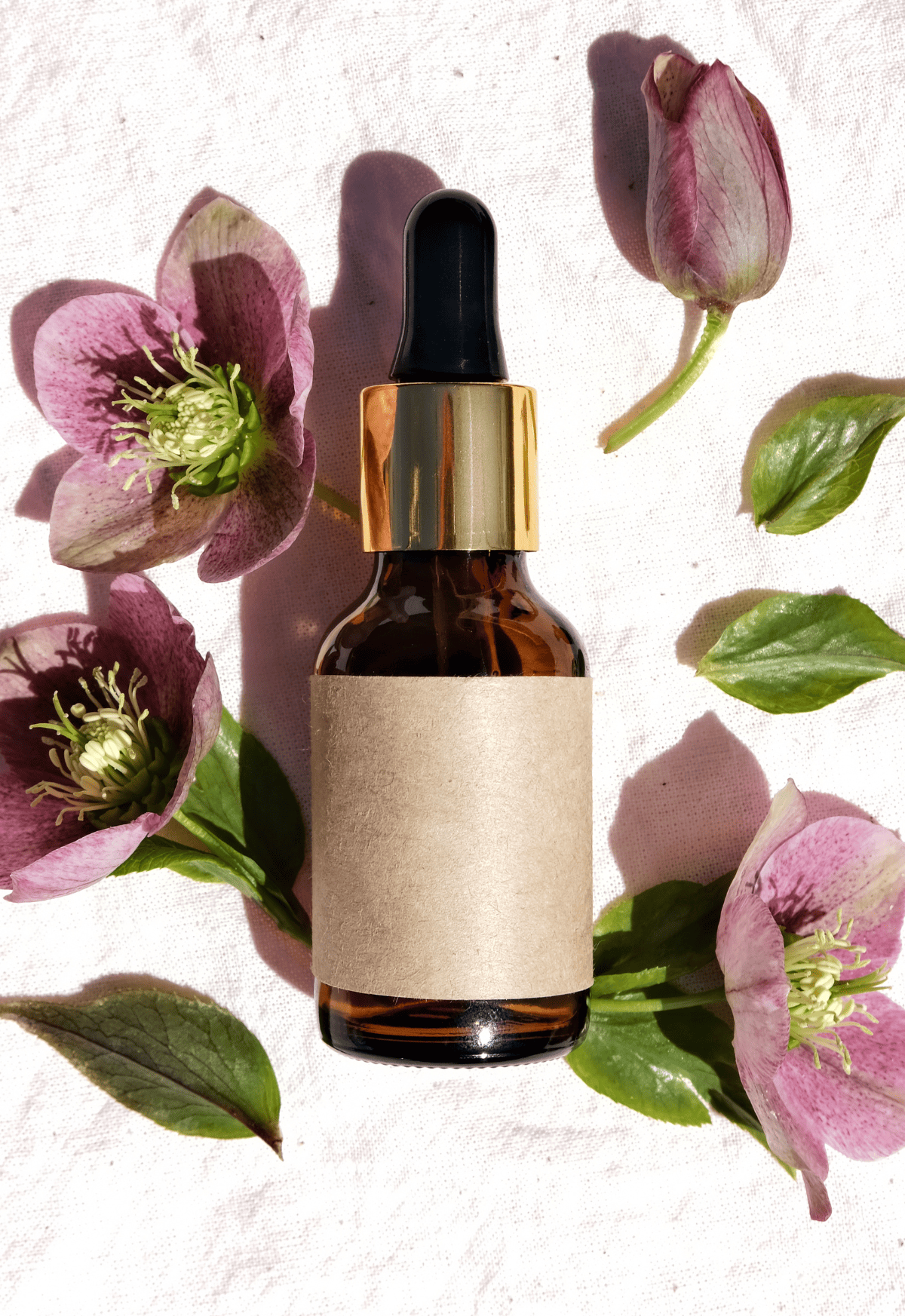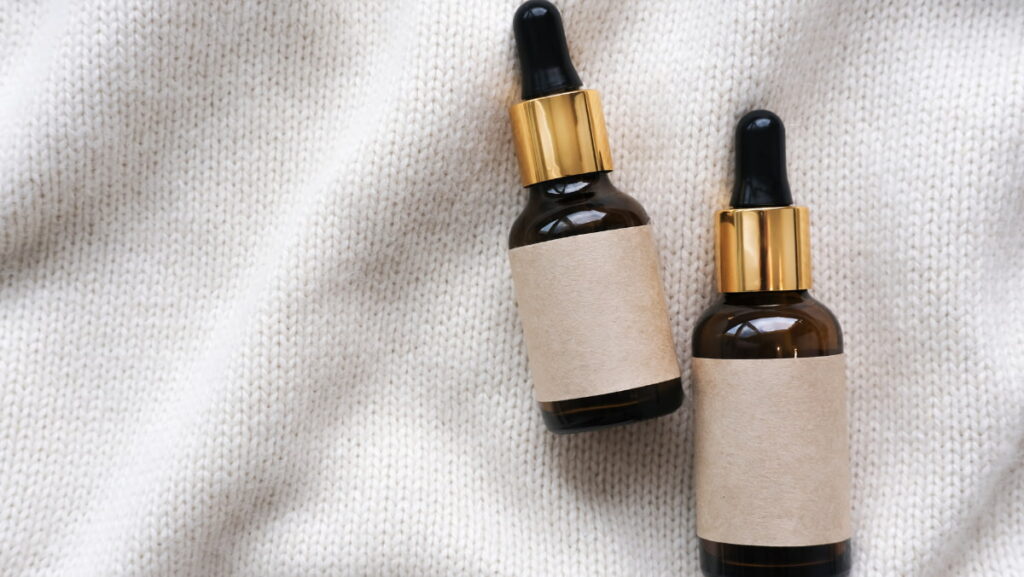
Navigating the realm of skincare, you’ve probably come across the terms glycolic acid and salicylic acid. These two supreme ingredients have earned their place in countless skincare products – but do you really know what they bring to the table for your skin?
Glycolic acid and salicylic acid are both used as exfoliators, but are they really interchangeable? What is the difference between glycolic acid and salicylic acid? Can you combine them, and which one is best for your skin?
Whether you want to smooth texture, brighten dull skin, or keep acne in check, understanding the ins and outs of glycolic acid and salicylic acid can make all the difference in your skincare journey.
Hang on tight because I will answer all your burning questions about these miraculous acids. Let’s dive deeper and see how they can become your skin’s new best friends.
Understanding Glycolic Acid and Its Effects on Your Skin

What Is Glycolic Acid
To begin with the comparison of glycolic acid and salicylic acid, I will shortly refresh your skincare knowledge on the first of the two ingredients.
Glycolic acid is an alpha-hydroxy acid (AHA) derived from sugar cane and is celebrated for its exfoliating abilities. It is water-soluble and therefore remains at the top layers of the skin, exerting its anti-inflammatory, keratolytic, and antioxidant effects.
Glycolic acid is the smallest AHA. This means it is the most potent since its small molecular size allows it to penetrate the deepest. It works by breaking down the bonds of the cells at the outer skin layer, booting out dead skin cells, and making room for fresh, new cells to step into the spotlight.
As a result, you’ll often notice a brighter, even-toned complexion that feels smoother to the touch.
What Are The Benefits Of Glycolic Acid
Exfoliating isn’t the only beneficiary of glycolic acid’s impressive résumé. You will also adore its proven efficacy in reducing acne, acne scars, hyperpigmentation, fine lines, and wrinkles.
This is due to its additional role in promoting cell turnover and collagen production, contributing to healthier-looking skin.
So, to sum up, the benefits of glycolic acid are:
- Exfoliating – Shedding dead skin cells
- Boosting Collagen Production
- Reducing acne and acne scars
- Correcting hyperpigmentation
- Fighting photodamage that presents with fine lines and wrinkles
Who Will Benefit From Glycolic Acid
When settling the debate between glycolic acid and salicylic acid, it’s important to understand which skin concerns each one addresses.
Glycolic acid is a powerhouse ingredient that is best for:
- Acne or post-inflammatory scarring
- Aging skin due to photodamage or natural processes
- Melasma
Glycolic acid is recommended for all skin types. However, it’s important to know that because it is highly potent, it may not be suitable for those with overly sensitive skin or certain skin ailments.
Pro tip: Regular application of glycolic acid can lead to skin becoming more sensitive to the sun, making SPF more crucial than ever.
The Role of Salicylic Acid for Skin Health

What Is Salicylic Acid
When comparing glycolic acid and salicylic acid, the latter is probably the star of skincare products targeting acne-prone skin. Why, I hear you ask? Because salicylic acid is your go-to ally against troublesome acne.
Salicylic acid is a beta-hydroxy acid (BHA) derived from the bark of the white willow and wintergreen leaves. Contrary to AHAs, salicylic acid is oil-soluble, which means it can penetrate deep into your sebum-producing glands.
There, it breaks down the excess sebum and regulates oil production, keeping acne breakouts at bay. Salicylic acid also works as a keratolytic agent by loosening cell attachments.
Therefore, it also exfoliates the skin and unclogs the pores, effectively breaking down tedious blackheads and whiteheads.
What Are The Benefits Of Salicylic Acid
As well as being a veritable one-two punch against acne, salicylic acid also shines in other skincare areas.
Salicylic acid has been shown to effectively tackle rough, textured skin, hyperpigmentation, freckles, as well as fine lines and wrinkles.
To sum up, the benefits of salicylic acid for your skin are:
- Exfoliating and unclogging the pores
- Reducing acne
- Improving skin tone by fighting hyperpigmentation
- Reversing photodamage
- Minimizing fine lines and wrinkles
- Evening rough, textured skin
Can you combine salicylic acid with your favorite niacinamide? You can read my hot take right here.
Who Will Benefit From Salicylic Acid
As you may have guessed by now, salicylic acid can be your go-to ally against troublesome acne.
You will love salicylic acid if you have the following:
- Increased oil production
- Acne-prone skin
- Aging skin and hyperpigmentation
Salicylic acid is also known to make your skin more sensitive to the sun. Remember, using sunscreen when using skincare products with salicylic acid is essential.
Pro tip: When using exfoliating acids, it is best to start with smaller concentrations and less frequent applications to test your skin’s tolerance.
Difference Between Glycolic Acid And Salicylic Acid
Wow, we have unpacked almost everything there is to know about glycolic acid and salicylic acid. They are both amazing in their respective ways. So, I will provide a side-by-side comparison to help you decide which one is best for your unique skincare needs.
Here is the difference between glycolic acid and salicylic acid:
| Glycolic Acid | Salicylic Acid | |
| Type of Acid | Alpha-hydroxy acid (AHA) | Beta-hydroxy acid (BHA) |
| Solubility | Water-soluble | Oil-soluble |
| Penetration Ability | Penetrates the top layers of the skin | Penetrates deep into the pores |
| Main Effects | Exfoliating, anti-inflammatory, keratolytic, and antioxidant | Exfoliating, unclogging pores, regulating oil production |
| Main Benefits | -Exfoliating, shedding dead skin cells -Boosting collagen production -Reducing scars, lines, and wrinkles | -Exfoliating, and unclogging pores -Reducing whiteheads and blackheads -Improving textured skin and skin tone |
Can You Combine Glycolic Acid And Salicylic Acid?
Glycolic acid and salicylic acid are extraordinary skincare ingredients. Choosing between them can be hard, especially when your skin needs their combined benefits.
So, the question arises. Can I use glycolic acid and salicylic acid together?
Unlike other ingredients, these two fellas go well together! When combined, glycolic acid and salicylic acid offer a dual approach to rejuvenating your skin.
Combining these two acids might appear concerning, given that they both deliver their benefits through exfoliation. Yet, the way they work makes them such an ideal combination.
As glycolic acid works on the skin’s surface, clears dead skin cells, and stimulates new cell growth, salicylic acid can penetrate deeper into the oil-filled pores, aiding in clear skin from the inside out. In a way, glycolic acid paves the way, allowing for deeper penetration of salicylic acid.
However, I would recommend not mixing the two acids together! Both salicylic acid and glycolic acid are potent exfoliators, so mixing them can compromise our skin’s natural barrier. They can also acidify our skin’s pH, leading to redness, irritation, and inflammation.
However, there is no reason to worry! There are tips and tricks to safely combine the two ingredients.
How To Combine Glycolic Acid And Salicylic Acid

In Different Steps Of The Same Routine For Maximum Impact
One way to incorporate both glycolic acid and salicylic acid into your routine is by using them in different steps.
Start with a product containing glycolic acid, like a gentle cleanser, to kickstart the exfoliation process. After rinsing and patting your skin dry, wait at least 10 minutes for the glycolic acid to work its magic.
Then, follow up with a toner or serum that features salicylic acid. This time gap allows for the skin to absorb the ingredients and restore its natural pH, reducing the possibility of irritation.
Use One In Your AM And The Other In Your PM Routine
If you have sensitive skin or want to ease your way into the glycolic acid and salicylic acid combo, alternating their usage is a smart move.
Here’s how it works: use salicylic acid in the morning and reserve glycolic acid for your nighttime routine, or vice versa.
Giving your skin a break between the two acids allows you to enjoy the benefits without overwhelming your complexion. Remember to listen to your skin and adjust the frequency based on how it reacts.
Use Glycolic Acid And Salicylic Acid In Alternate Days
If you prefer a simplified approach to incorporating glycolic acid and salicylic acid, alternating their usage on different days is a great strategy. This method allows each acid to take the spotlight and work its magic without overlapping. Here’s how you can implement it:
Start using salicylic acid for one day as part of your skincare routine. Choose a product like a toner or serum that contains salicylic acid and apply it after cleansing. Let it work its magic, targeting acne, unclogging pores, and improving skin tone.
The next day, switch gears and introduce glycolic acid into your routine. Opt for a product like a gentle exfoliating cleanser or a treatment serum with glycolic acid. Apply it to clean, dry skin and let it work its wonders overnight or throughout the day.
By alternating the usage of these acids, you give your skin dedicated time to benefit from each one’s unique properties. This method is especially beneficial if you have sensitive skin or are concerned about potential interactions between the two acids.
Useful Tips For Combining Glycolic Acid And Salicylic Acid
To ensure you’re seeing the best results from combining these two heavy hitters in skincare, consider the following:
- Tip 1: Both of these acids can make your skin more sensitive to the sun. So, use a broad-spectrum sunscreen during the day.
- Tip 2: You should start slow, using lower concentrations of either acid and gradually building up as your skin adapts to them.
- Tip 3: Ensure plenty of hydration. Use a good moisturizer given that both glycolic and salicylic acid can have drying effects on the skin.
Always remember, skincare is personal. While combining glycolic acid and salicylic acid can yield excellent results for some, it may not work for everyone. Monitor your skin closely when you start any new regimen and adapt as necessary.
Conclusion: Deciding If Glycolic Acid and Salicylic Acid Skincare Routine Is Right for You
Are you still considering whether a skincare regime spotlighting glycolic acid and salicylic acid is the right move for you? Let’s take a quick back pedal here!
Glycolic acid, a potent AHA, puts in the work for thorough exfoliation and skin rejuvenation. It will make your skin look brighter, younger, and more toned!
On the other side, salicylic acid, our favorite BHA, will provide deep exfoliation, regulate sebum production, and prevent disheartening breakouts. Overall, it will improve your skin tone and texture, making your complexion as radiant as ever!
You can also use glycolic acid and salicylic acid together. By incorporating both into your skincare routine, you’re hitting all corners. Surface skin issues? Glycolic acid swoops in. Need to cleanse your pores deep down? Salicylic acid takes the reign.
Nevertheless, listening to your skin when embracing these potent acids as a tag team in your skincare is essential.
Your skin might take some time to adjust, and that’s perfectly fine – remember, it’s not a race; it’s a marathon. Ultimately, it’s all about finding the best balance for your unique skincare needs.
Harnessing the power of glycolic acid and salicylic acid could be just the ticket for achieving that glowing skin you’ve always craved. It’s yours for the taking, so why not give it a whirl?
Frequently Asked Questions

Good morning Simone.
I have read your article on salicylic acid and glycolic acids and there is a serum by Neutrogena (clear and defend) which uses these ingredients together. I’m just abit confused that some experts say it’s ok to use these ingredients together and others say no.
I’m an ordinary 55yrs woman who has combination and sensitive skin and I am interested to use this particular serum. I have recently started using retinol by cerave at night and I’m wondering if this serum will be ok to use, of course I will not use the Neutrogena serum day after the retinol. I am using the retinol every 3 days and will continue this for some time. I have also been suffering from breakouts on my T Zone and I also suffer cold sores though I have this under control by taking extra vitamins and lysine for my immune system.
I hope you can get back to me about the 2 ingredients I mentioned and that my skincare regime is correct please.
Thank you for reading this.
Ismay Shields.